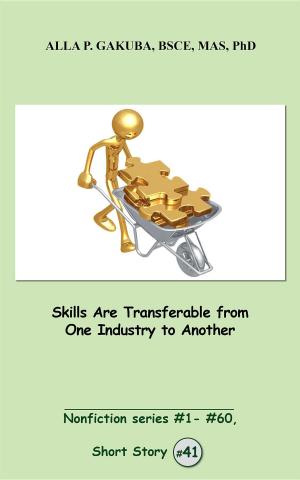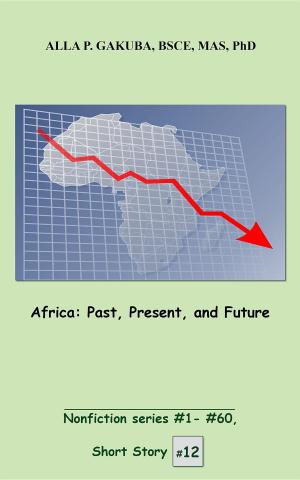Risk:To Take or Not to Take? Or, Once You Take a Risk, Your Probability of Success Goes from 0% to 50%
SHORT STORY # 24. Nonfiction series #1 - # 60.
Business & Finance, Management & Leadership, Decision Making & Problem Solving, Motivational, Business Reference| Author: | Alla P. Gakuba | ISBN: | 9781943131549 |
| Publisher: | Know-How Skills | Publication: | December 4, 2016 |
| Imprint: | Know-How Skills | Language: | English |
| Author: | Alla P. Gakuba |
| ISBN: | 9781943131549 |
| Publisher: | Know-How Skills |
| Publication: | December 4, 2016 |
| Imprint: | Know-How Skills |
| Language: | English |
That was beginning of the 1970s when the author started her engineering career. Surprisingly, she was hired, but she was the 1st woman structural engineer in a company. Men engineers revolted, they thought that now their engineering career is going down—a woman is going to design a bridge.
The first 3-4 days the author was reading volumes of federal and state codes, requirements, and regulations. Then, a chief engineer called her to his office and, in front of 3-4 other chiefs of departments, has unrolled a field drawing. And announced: “Alla, you are going to design this 3-span bridge, over a ramp A, alone, one person.” Then, he took a red marker pen and drew a line in the middle of a drawing. There he added a letter A—indicating the beginning of a bridge. And a letter B—the end of a bridge.
That was it. No examples, no instructions, nothing. The silence fall, indicating that the rendezvous was over. As the author took this field drawing and start walking towards her office —the panic and dizziness come down. “How in the world I am going to design this bridge? Only if some miracles could happened,” she though.
She never designed a bridge before. And in engineering school she took only courses: math, physics, statics, kinematic, dynamics, strength of materials, reinforced concrete, and many other subjects. There was no one on how to design a bridge, or a building, or a highway. Only after the school, on the job, engineers are learning how to design such structures.
In the end she designed this bridge by inventing from a scratch all calculations and drawings. The company was so impressed that they started looking for another woman engineer. How she took a risk, and how “miracle” happened—please read this story. Once you finish reading—you will learn new skills. And from now on the readers became knowledgeable and fearless in solving any problem, or taking any risk.
That was beginning of the 1970s when the author started her engineering career. Surprisingly, she was hired, but she was the 1st woman structural engineer in a company. Men engineers revolted, they thought that now their engineering career is going down—a woman is going to design a bridge.
The first 3-4 days the author was reading volumes of federal and state codes, requirements, and regulations. Then, a chief engineer called her to his office and, in front of 3-4 other chiefs of departments, has unrolled a field drawing. And announced: “Alla, you are going to design this 3-span bridge, over a ramp A, alone, one person.” Then, he took a red marker pen and drew a line in the middle of a drawing. There he added a letter A—indicating the beginning of a bridge. And a letter B—the end of a bridge.
That was it. No examples, no instructions, nothing. The silence fall, indicating that the rendezvous was over. As the author took this field drawing and start walking towards her office —the panic and dizziness come down. “How in the world I am going to design this bridge? Only if some miracles could happened,” she though.
She never designed a bridge before. And in engineering school she took only courses: math, physics, statics, kinematic, dynamics, strength of materials, reinforced concrete, and many other subjects. There was no one on how to design a bridge, or a building, or a highway. Only after the school, on the job, engineers are learning how to design such structures.
In the end she designed this bridge by inventing from a scratch all calculations and drawings. The company was so impressed that they started looking for another woman engineer. How she took a risk, and how “miracle” happened—please read this story. Once you finish reading—you will learn new skills. And from now on the readers became knowledgeable and fearless in solving any problem, or taking any risk.















